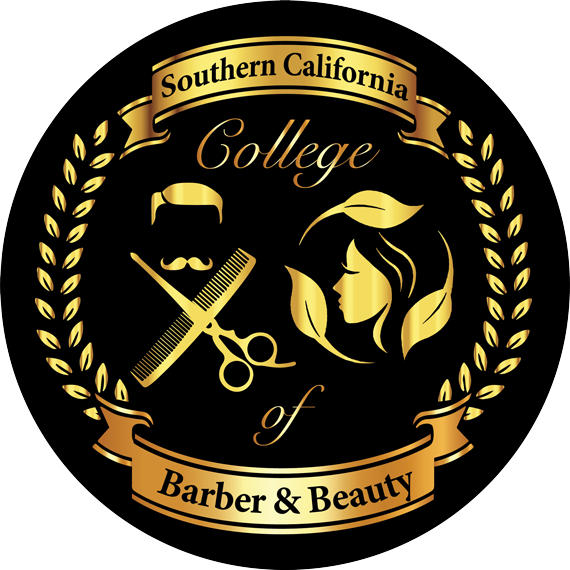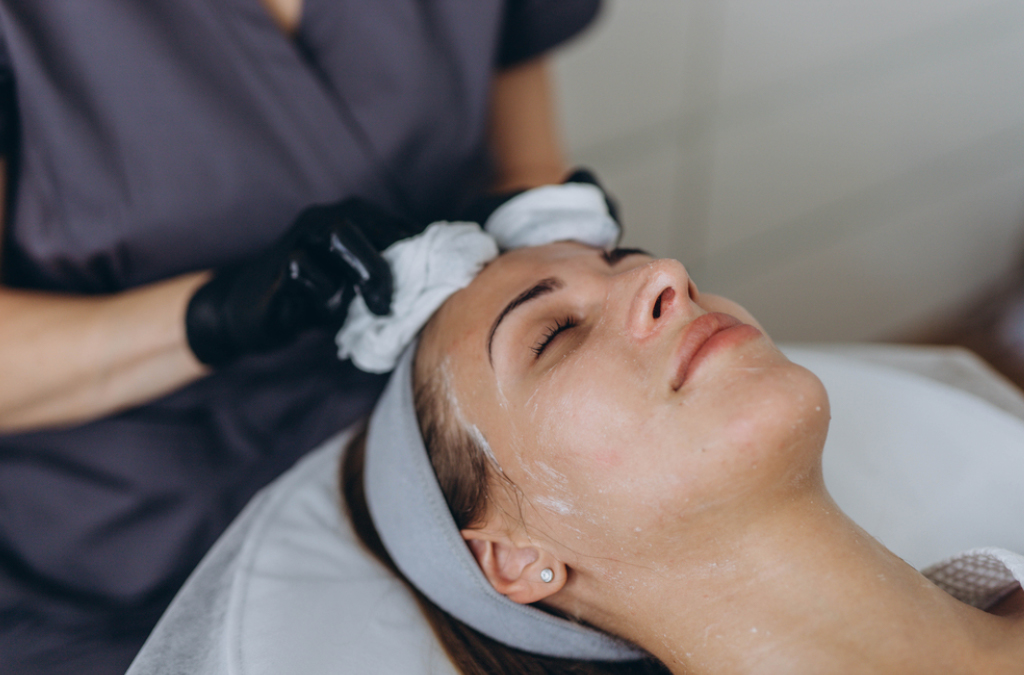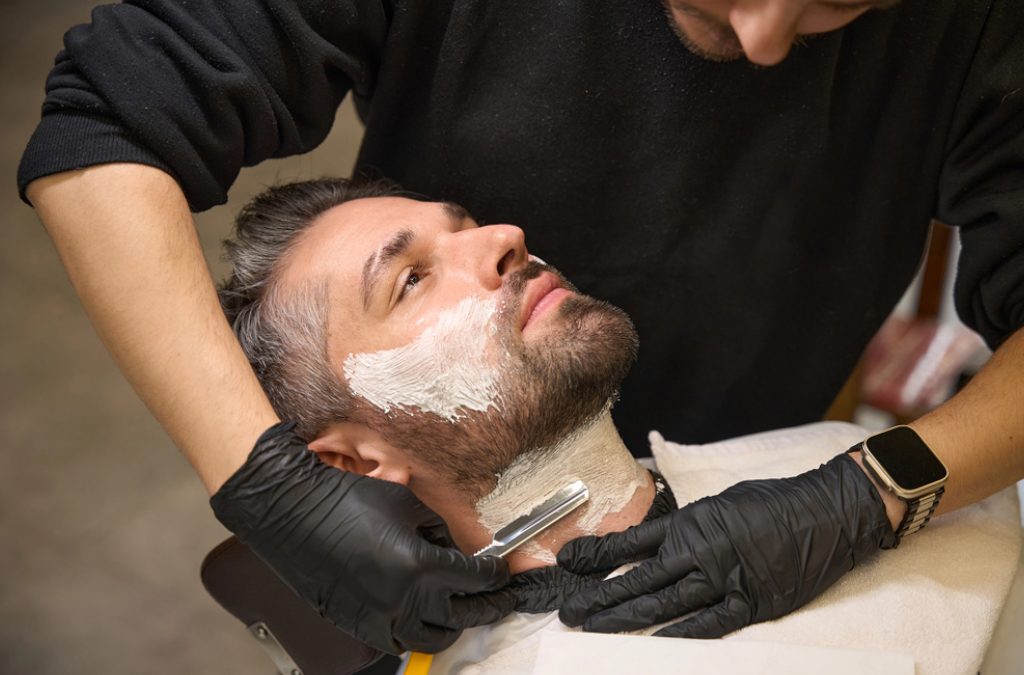When deciding on a career in skincare, you might wonder about the distinction between a medical aesthetician and an esthetician. Both professions focus on improving skin health and appearance, yet they differ in training, scope of practice, and work environments. Understanding the nuances between a medical aesthetician vs. esthetician can help you choose the right path for your goals.
Additionally, knowing the salary range of a licensed medical aesthetician can provide clarity about your earning potential. At Southern California College of Barber & Beauty, we guide you through these differences so you can make an informed decision about your future career.
What Is an Esthetician?
An esthetician is a skincare professional trained to perform treatments such as facials, waxing, makeup application, and basic skin analysis. Their work centers around enhancing the overall appearance and health of the skin through non-invasive methods. Estheticians typically operate in spas, salons, or wellness centers and focus on providing relaxation and cosmetic improvement. They use products and techniques designed to cleanse, exfoliate, and hydrate the skin, helping clients achieve a refreshed and youthful look.
Training to become an esthetician usually involves a state-approved cosmetology or esthetics program covering skin anatomy, sanitation, and basic skin care techniques. Additionally, estheticians learn about various skin types and conditions to tailor treatments that best suit individual client needs. Building strong client relationships and offering personalized skincare advice are also important aspects of their role.
Defining a Medical Aesthetician
A medical aesthetician undergoes more specialized training than a traditional esthetician, focusing on advanced skincare treatments often performed under medical supervision. Their scope includes assisting dermatologists or plastic surgeons with procedures like chemical peels, microdermabrasion, laser treatments, and pre- and post-operative skincare. This advanced role requires additional certifications and licenses beyond basic esthetician training, often involving education in anatomy, physiology, and medical ethics.
Medical aestheticians work in medical offices, clinics, or specialized skin care centers. They address more complex skin issues such as scarring, pigmentation, and aging. They also monitor patient progress and ensure treatments are safe and effective, playing a vital role in enhancing medical skincare outcomes. This career path blends technical skill with medical knowledge to support patient health and aesthetic goals.
Training and Licensing Differences
The primary difference between a medical aesthetician and an esthetician lies in the depth of training and licensing requirements. While estheticians complete foundational education focusing on cosmetic skincare, medical aestheticians pursue further education that includes clinical and medical knowledge, often involving hands-on medical procedure training. Licensing for estheticians typically involves passing a state exam after completing the required hours of training.
Medical aestheticians, however, often need additional certifications related to medical procedures, depending on state regulations and facility requirements. This additional training equips medical aestheticians to work safely in more complex clinical environments.
Southern California College of Barber & Beauty offers comprehensive programs that prepare you for either path, supporting your ambitions with accredited training, expert instructors, and practical experience.
Work Environments and Job Responsibilities
Estheticians work mainly in salons, spas, or wellness centers, where their tasks involve improving clients’ skin appearance and offering relaxation treatments such as facials, exfoliation, and moisturizing. Medical aestheticians, by contrast, work in more clinical settings, collaborating closely with healthcare professionals like dermatologists and plastic surgeons. Their responsibilities include preparing patients for medical procedures, monitoring skin reactions during and after treatments, and managing advanced skincare regimens tailored to specific medical needs.
Medical aestheticians may also educate patients on skincare maintenance and recovery. Both roles require strong communication skills to build trust and ensure client comfort throughout treatments. Knowing your preferred work environment and job duties can greatly influence whether you choose esthetician or medical aesthetician training, helping you align your career with your interests and goals.
Salary Expectations: Licensed Medical Aestheticians’ Salary Insights
One important factor when choosing between these careers is the potential salary. Licensed medical aestheticians generally earn higher wages compared to estheticians, reflecting their advanced training, specialized skills, and increased medical responsibilities. The licensed medical aesthetician salary can vary widely depending on factors such as geographic location, years of experience, type of employer, and additional certifications.
Typically, medical aestheticians working in high-demand urban areas or prestigious medical facilities earn significantly more than those in smaller markets. This financial outlook makes pursuing medical aesthetics appealing if you want a career with greater earning potential, job stability, and opportunities for professional growth in the expanding field of medical skincare.
Career Advancement Opportunities
Choosing to become a medical aesthetician can open doors to specialized roles within medical spas, dermatology offices, plastic surgery clinics, and other healthcare settings focused on advanced skincare treatments. This career path allows you to develop expertise in medical-grade procedures and take on more responsibility in patient care, including assisting before and after surgeries. You will work closely with medical professionals to ensure safe and effective treatments.
Meanwhile, estheticians can advance by earning certifications in areas like chemical peels or makeup artistry, specialize in certain treatments, or move into salon management. Southern California College of Barber & Beauty supports both career paths with flexible, accredited programs designed to match your goals. Our expert instructors and hands-on training provide the skills needed to succeed in either esthetics or medical aesthetics.
Which Path Is Right for You?
Choosing to be a medical aesthetician or an esthetician depends on your personal interests, career goals, and willingness to pursue additional training. If you are passionate about skincare but prefer a more traditional spa or salon environment, esthetician training will suit you well.
On the other hand, if you desire to work closely with medical professionals and perform advanced treatments, medical aesthetics might be a better fit. Understanding the differences and salary prospects can help you make a choice that aligns with your future.
At Southern California College of Barber & Beauty, our accredited programs provide the education and hands-on experience you need to succeed in either esthetics or medical aesthetics. We offer financial aid options to support your enrollment and personalized guidance to help you reach your career goals. By choosing our school, you gain access to expert instructors, practical salon services, and a community dedicated to your professional growth.




